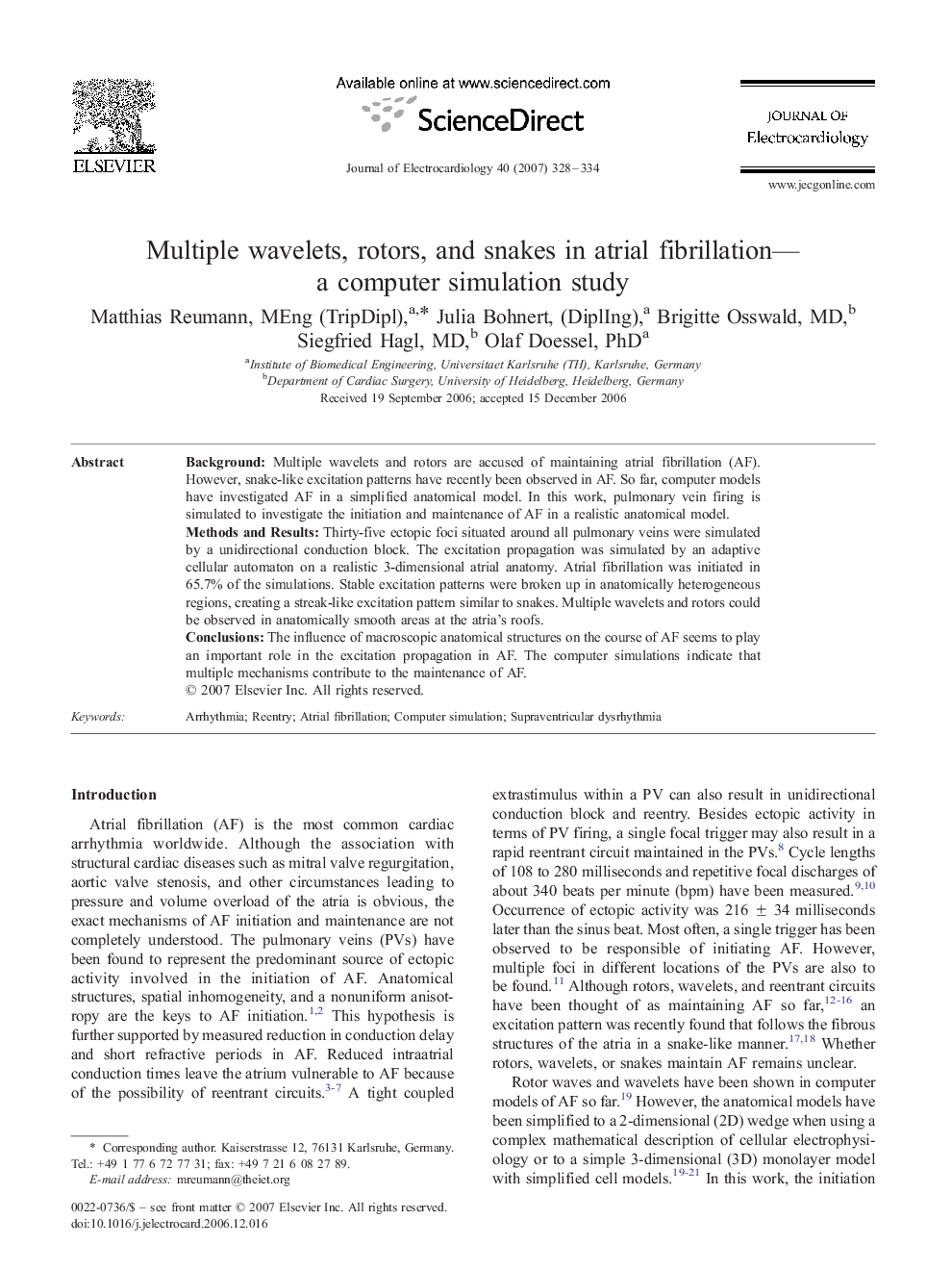| Article ID | Journal | Published Year | Pages | File Type |
|---|---|---|---|---|
| 2968241 | Journal of Electrocardiology | 2007 | 7 Pages |
BackgroundMultiple wavelets and rotors are accused of maintaining atrial fibrillation (AF). However, snake-like excitation patterns have recently been observed in AF. So far, computer models have investigated AF in a simplified anatomical model. In this work, pulmonary vein firing is simulated to investigate the initiation and maintenance of AF in a realistic anatomical model.Methods and ResultsThirty-five ectopic foci situated around all pulmonary veins were simulated by a unidirectional conduction block. The excitation propagation was simulated by an adaptive cellular automaton on a realistic 3-dimensional atrial anatomy. Atrial fibrillation was initiated in 65.7% of the simulations. Stable excitation patterns were broken up in anatomically heterogeneous regions, creating a streak-like excitation pattern similar to snakes. Multiple wavelets and rotors could be observed in anatomically smooth areas at the atria's roofs.ConclusionsThe influence of macroscopic anatomical structures on the course of AF seems to play an important role in the excitation propagation in AF. The computer simulations indicate that multiple mechanisms contribute to the maintenance of AF.
